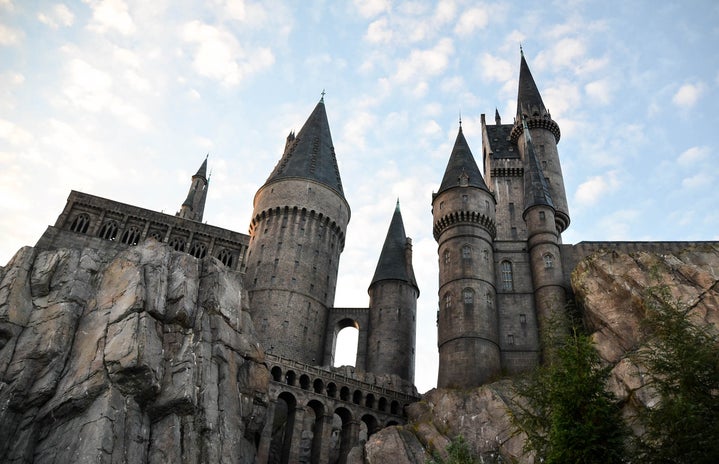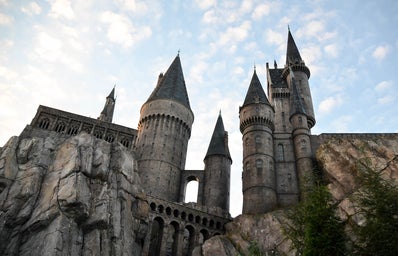From medieval fortresses to beautiful royal residences, you just can’t find them in the States.
As an American, some of my favorite places to visit in Europe are its many castles, since visiting a castle is genuinely an experience I can’t get at home. I used to think that all castles were the same. After all, they all served similar functions: housing a king, lord, or other authority and protecting the seat of government. But after visiting various castles in various countries, I’ve come to realize that all castles are not created equal, although they’re all steeped in legend and history. Here are some of my favorite castles, palaces and royal residences that I’ve visited so far:
1. Palace of Versailles, France
Built to reflect the grandeur of the erstwhile French monarchy, Versailles impresses both onscreen and off. Originally a hunting lodge built by King Louis XIII, his son Louis XIV enlarged it through multiple building projects until it became the seat of his government in 1682. The palace is gigantic and dripping in gilt, with more than two thousand rooms including large state rooms, private rooms for the royal family and rooms for courtiers. Versailles also contains the famous Hall of Mirrors, which is even more impressive in real life than it is in films. Don’t forget to explore the grounds too – two smaller palaces, the Grand Trianon and the Petit Trianon (better known as Marie Antoinette’s private retreat), are also open to visitors, as is the Queen’s Hamlet, a miniature village of rustic buildings that served as both a retreat for the Queen and a working farm.
https://en.chateauversailles.fr/discover/history
2. ChÂteau de Chenonceau, France
Located in the beautiful Loire valley, Chenonceau is your typical French castle. It has a storied history – originally given as a gift to a French king’s mistress, his wife took possession of the castle after he died. During the 1700s, the castle hosted a literary salon led by Louise Dupin; it served as a military hospital during World War I and marked the borders of the Free and Occupied zones in France in World War II. The owners of the castle, the Menier family, helped smuggle people wanted by the Nazis across the border. Perhaps because of its exquisite beauty, the castle has been open to the public since 1913.
3. Neuschwanstein Castle, germany
Tucked away in the mountains of Bavaria, Neuschwanstein looks like something out of a fairy tale – and its blue and white appearance inspired Walt Disney when he went to make his own castle. But don’t let its appearance fool you – the castle only began construction in 1869. King Ludwig II of Bavaria, disillusioned after Bavaria’s loss to Prussia during the Austro-Prussian War, withdrew increasingly into the world of medieval German myths and legends. He was particularly inspired by the legend of the swan knight Lohengrin, and traces of mythology can be seen throughout the castle, almost serving as a rebuke to what he felt was his disappointing present. The King began living in Neuschwanstein in 1884 but sadly died in 1886.
4. Linderhof Palace, germany
The second of the three castles Ludwig II had built (the third, Herrenchiemsee, Linderhof was modeled on Versailles but never completed as the project went massively over budget) is much smaller than the other castles but is just as beautiful, situated at the bottom of a lovely valley. As Ludwig II idolized the absolutism of the French kings, the small castle is built in the French style and includes the rich style of French decoration. Again, the palace grounds are worth visiting because of the various ‘kiosks’ scattered around the park, including one with a Moorish theme.
5. Wawel Castle, Poland
High above the city of Krakow, the site that Wawel Castle sits on has been inhabited since the Paleolithic period. Legend even tells of a dragon said to inhabit the cave beneath the hill (and there’s a dragon statue you can visit to prove it). The current building dates from about 1540 and the architecture has traces of the Italian renaissance, feeling very much like a medieval fortress. The castle itself is large and imposing and there’s plenty to see inside, from historic interiors to a large collection of tapestries, arms and armor, and decorative objects. Also on the site is Wawel Cathedral, the burial site of Poland’s kings and national heroes – which is also worth a visit as its interior is stunning. Visitors can climb up the bell tower and visit the Pope Museum, which is almost entirely dedicated to Pope John Paul II, the only Polish pope.
6. Dunvegan Castle, Scotland
A visit to the Isle of Skye in Scotland isn’t complete without a stop at an old Hebridean castle, and the only Highland fortress continuously occupied by the same family for 800 years. Besides the usual features of a fortress, this castle also has the Fairy Flag, which apparently preserves some connection between the reigning family and the Faerie world, although there are a couple versions of the tale. In one version, a Macleod chief married a fairy, but they were only able to live together for one year. Upon the fairy’s return to her homeland, she gave the chief the flag and told him to wave the flag in battle to bring him victory, no matter the odds – although this magical feat could only be performed three times. There is documentation of the flag’s use in two battles between clans at the time, and the flag was apparently almost used during World War II against the Germans. The persistence of myths relating to the flag illustrates the Highlands’ rich folkloric culture.
7. Palace of Holyroodhouse, Scotland
Although Holyroodhouse in Edinburgh is still the official residence of the English monarch in Scotland, its history stretches back all the way to 1128, when it was founded as a monastery. The kings of Scotland began to live in the castle once Edinburgh was accepted as the capital of Scotland. Perhaps the palace’s most famous resident was Mary, Queen of Scots. She lived in the palace for most of her life and her private secretary David Rizzio was stabbed in her bedchamber, by a group of men led by her husband – apparently his blood still marks the floorboards.
8. Hampton Court Palace, England
Situated on the Thames River, this former royal residence is accessible by car, train, or boat. Although it hasn’t been used as a royal residence since 1737, famous past residents include Cardinal Wolsey, Henry VIII’s lord chancellor; the infamous Henry VIII himself (of the six wives), and William and Mary after the Glorious Revolution. The old medieval section of the palace isn’t as ornately decorated as some of the other places on this list, but it’s purportedly haunted and there’s definitely a heavy atmosphere in the old halls and staterooms. Less than an hour away from London, it makes for an easy day trip.
9. Kilkenny Castle, Ireland
This stone castle dominates the city of Kilkenny, having stood in one form or another for almost eight hundred years. It was originally built in the 1200s by the fourth Earl of Pembroke as a symbol of the English conquest of Ireland, but its most famous residents were the Butlers of Ormonde, as they held the castle for over 600 years. The castle has a fantastic library and picture gallery, and the city of Kilkenny is worth a visit as well – there’s a medieval church with a round tower that you can climb and a host of small shops and pubs that make Kilkenny feel lively no matter the time of day or year.
I originally had a pretty monolithic view of European castles and expected them all to be the same. However, every castle I’ve visited has been a little different in its building and decorative style, and they’ve all taught me a lot about the time when they were built and the role they played in the history of their country before and after their founding. They’re unparalleled symbolism of European history – not to mention repositories of decorative arts and culture – and certainly well worth a visit.

